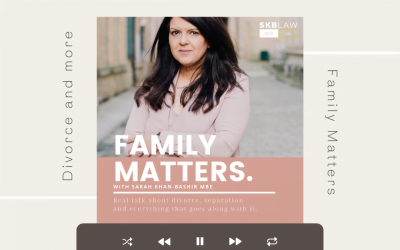It can be difficult to understand what to do next when you’ve reached the decision to divorce. Our step by step guide helps you understand the process, and how long it can take.
We highly recommend that you seek legal advice to protect yourself and your family. You will usually only need to visit our office once – to outline your case and sign the legal divorce form (D8). From that point, we will manage the process for you.
Step One – THE PETITION
The Reason
To obtain a divorce in English law, you must prove the marriage has ‘irretrievably broken down’ – that means the relationship has reached the point that it can no longer be saved. To do this, you can use one of five reasons (facts) in support of your claim. There are specific conditions attached to each of these reasons, so we do advise you to speak with a family law specialist before taking any action.
- Adultery. Your husband or wife had sexual intercourse with someone else of the opposite sex. It refers to full sexual intercourse between a man and woman when at least one of them is married to someone else. Relations with a member of the same sex, or any other sexual activity, do not amount to adultery under English law. The person committing the adulterer will not be treated more severely by the courts. Remember, you need to act quickly. You cannot give adultery as a reason if you lived together as a couple for 6 months after you found out about it. Contact our team to arrange your free 30 minute consultation today.
- Unreasonable Behaviour. The most common reason for divorce in England. You must prove that your relationship broke down because your spouse acted in such a way that you cannot reasonably be expect to live with them. You will need to provide 4-5 examples of actions that occurred in the last six months. Unreasonable behaviour covers a broad range of situations, from minor events, to physical or verbal abuse, excessive drug or alcohol use, controlling behaviour, or domestic violence and financial irresponsibility.
- Desertion. If your husband or wife has left you, you may be able to cite desertion. In order to use this ground, your spouse must have left (i) without a good reason (ii without your agreement (iii) on purpose to end your relationship (iv) for at least two years in the past two and a half years before filing for a divorce.
- Two Years Separation without consent. You can apply for a divorce if you’ve been separated for more than 2 years and both agree to the divorce. Your husband or wife must agree in writing.
- Five Years Separation with or without consent. You can apply for a divorce if you’ve been separated for at least 5 years, even if your husband or wife disagrees.
The Petition
Complete a form D8 (the petition) to request the Court’s permission to file for divorce. Usually, the person who starts the process (the petitioner) has to pay the Court fee of £550 (this fee is separate to any legal fees(. Your spouse is known as the ‘respondent.’ The petition includes details such as your name and contact details, your spouse’s name and contact details, the reason for divorce, and any financial considerations. You will need to supply your original marriage certificate or obtain an official copy.
We will submit the completed paperwork to court.
Step Two – THE COURT
Acknowledgement of Service
If the court finds everything is ok with the paperwork, they will send your spouse an ‘acknowledgement of service’ form. Your spouse will have eight days to reply to this form. They will confirm they agree with the reasons for divorce and whether they intend to defend the divorce. If they wish to defend the divorce, you should seek legal advice. If your spouse does not return the papers within the time limit, a duplicate set of the papers will be sent by recorded delivery, or arrangements are made for personal service.
Decree Nisi
If your spouse does not wish to ‘defend’ the divorce, you can apply for decree nisi – a document that says that the court does not see any reason why you cannot divorce. We will complete and file the necessary statement and application to the court. The court will consider whether it is satisfied that the petitioner has proved they are entitled to a divorce. If everything is in order, the court will grant a ‘pronouncement’ date. This is the date the court will issue a statement that if there is no reason to the contrary, the petitioner is entitled to apply for decree absolute, and end the marriage. You are not usually required to attend this hearing. The decree nisi is the first of two steps to bring your marriage to an end. At this point, you can still change your mind.
Step Three – THE DIVORCE
Decree Absolute
Six weeks and one day after the decree nisi has been pronounced, you can apply for the decree absolute. This is the legal document that officially ends your marriage. You must apply for the document within 12 months of getting your decree nisi. If you do not apply, you remain married, and may have to explain to the court why you have not applied. At this point, your spouse can also apply on notice three months and one day after the petitioner could have first applied for the decree absolute. They will need to pay a fee of £155.
*It is important to remember that if you want an arrangement for dividing any finances or children’s matters to be legally binding, you must apply to the court for this before you submit your application for a decree absolute.*
The court will hear your application for a decree absolute. Once your application is granted, you will be issued a decree absolute. You are now legally divorced. You may still have pending financial or childcare arrangements.


